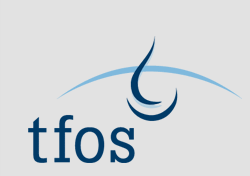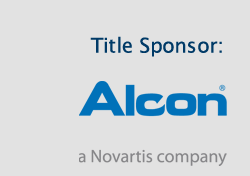








 |
INTRODUCTION
The TFOS International Workshop on Contact Lens Discomfort: Executive Summary
Jason J. Nichols,1 Mark D. P. Willcox,2 Anthony J. Bron,3 Carlos Belmonte,4 Joseph B. Ciolino,5 Jennifer P. Craig,6 Murat Dogru,7 Gary N. Foulks,8 Lyndon Jones,9 J. Daniel Nelson,10 Kelly K. Nichols,1 Christine Purslow,11 Debra A. Schaumberg,12 Fiona Stapleton,2David A. Sullivan,13 and the members of the TFOS International Workshop on Contact Lens Discomfort
1The Ocular Surface Institute, University of Houston College of Optometry, Houston, Texas 2School of Optometry and Vision Science, University of New South Wales, Sydney, New South Wales, Australia 3University of Oxford Nuffield Lab of Ophthalmology, Oxford, United Kingdom 4Instituto de Neurociencias, Universidad Miguel Hernandez-Consejo Superior de Investigaciones Cientificas, Alicante and Fundacio ́n de Investigacio ́n Oftalmologica, Instituto Fernandez-Vega, Oviedo, Spain
5Massachusetts Eye and Ear Infirmary, Boston, Massachusetts 6University of Auckland, Department of Ophthalmology, Auckland, New Zealand 7Tokyo Dental College Ichikawa Hospital, Tokyo, Japan
8University of Louisville, Department of Ophthalmology & Visual Science, Kentucky Lions Eye Center, Louisville, Kentucky 9Centre for Contact Lens Research, School of Optometry and Vision Science, University of Waterloo, Waterloo, Canada 10Health Partners Medical Group, Minneapolis, Minnesota 11Plymouth University, Peninsula Allied Health Centre, Plymouth, United Kingdom 12Moran Center for Translational Medicine, John A. Moran Eye Center, Department of Ophthalmology & Visual Sciences, University of Utah School of Medicine, Salt Lake City, Utah 13Schepens Eye Research Institute, Massachusetts Eye and Ear, Harvard Medical School, Boston, Massachusetts
Correspondence: Jason J. Nichols, The Ocular Surface Institute, University of Houston College of Optometry, 505 J. Davis Armistead Building, 4901 Calhoun Road, Houston, TX 77204; jnichols@optometry.uh.edu.
Contact lens discomfort (CLD) is a frequently experienced problem, with most estimates suggesting that up to half of contact lens wearers experience this problem with some frequency or magnitude. This condition impacts millions of contact lens wearers worldwide. Yet, there is a paucity of consensus and standardization in the scientific and clinical communities on the characterization of the condition, includ- ing the definition, classification, epidemiology, pathophysiolo- gy, diagnosis, management, influence of contact lens materials, designs and care, and the proper design of clinical trials.
The Tear Film & Ocular Surface Society (TFOS), which is a nonprofit organization, has conducted two prior international, consensus building workshops, including the Dry Eye WorkShop (DEWS; available in the public domain at http://www.tearfilm. org/tearfilm-reports-dews-report.php) and the Meibomian Gland Dysfunction Workshop (MGD; available in the public domain at http://www.tearfilm.org/tearfilm-reports-mgdreport.php). To that end, TFOS initiated the process of conducting a similar workshop in January 2012—a process that took approximately 18 months to complete and included 79 experts in the field. These experts participated in one or more topical subcommittees, and were assigned with taking an evidence-based approach at evaluating CLD. Eight topical subcommittees were formed, with each generating a related report, all of which were circulated for presentation, review, and input of the entire workshop membership.
The entire workshop originally is being published in this issue of IOVS, in English, with subsequent translations into numerous other languages. All of this information is intended to be available and accessible online, free of charge. This article is intended to serve as an Executive Summary of the eight subcommittee reports, and all information contained here was abstracted from the full reports.
Correspondence: Jason J. Nichols, The Ocular Surface Institute, University of Houston College of Optometry, 505 J. Davis Armistead Building, 4901 Calhoun Road, Houston, TX 77204;
jnichols@optometry.uh.edu.
See the tables in the Introduction for the members of the TFOS International Workshop on Contact Lens Discomfort.
Submitted: September 6, 2013 Accepted: September 6, 2013
Citation: Nichols JJ, Willcox MDP, Bron AJ, et al. The TFOS International Workshop on Contact Lens Discomfort: Executive Summary. Invest Ophthalmol Vis Sci. 2013;54:TFOS7–TFOS13. DOI:10.1167/iovs.13-13212
Keywords: contact lenses, dry eye, discomfort, dryness, discontinuation
|














